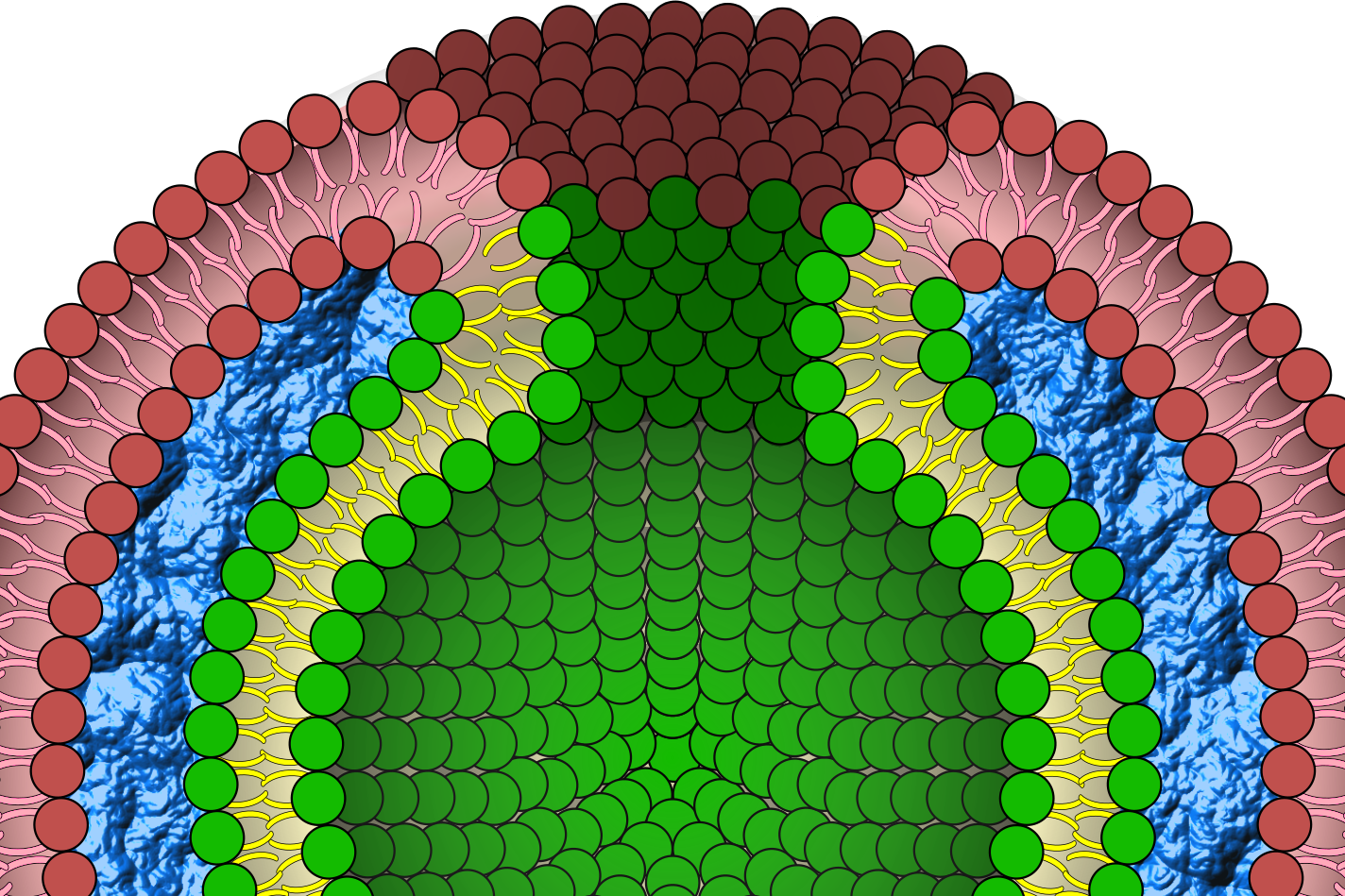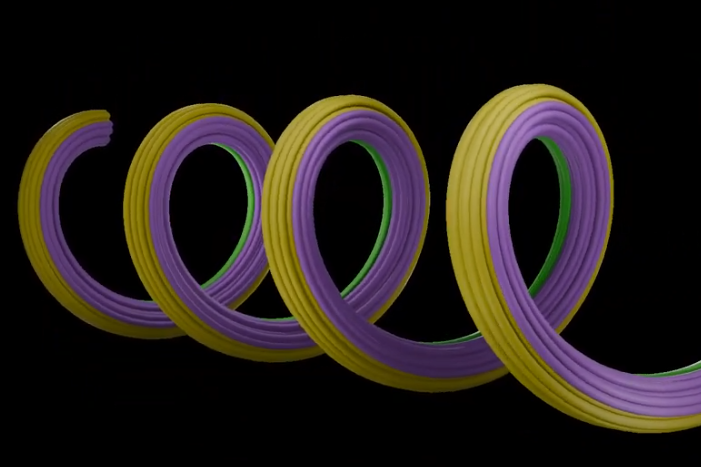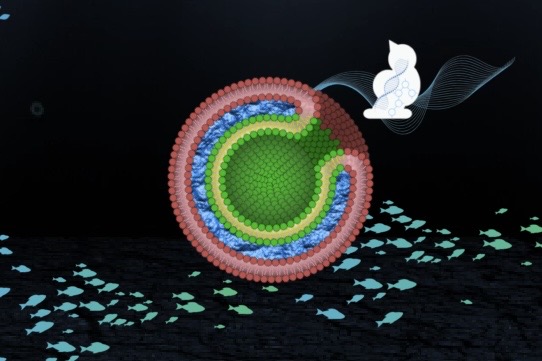Bilayer
Gel
Bilayer
Abstract
Liposomes are expected to serve as chassis and reactors in constructing drug delivery systems[1][2]and molecular robots[3] by encapsulating drug molecules or various designed biomolecules. Conventional liposomes are sensitive to external stresses such as changes in osmotic pressure[4] and pH. To extend the application field, an increase in the stability of liposomes is required. Previous research has enhanced the stability of liposomes using DNA hydrogel[5] or PEG-modified lipids[6][7][8] on the membrane. However, these modifications might inhibit molecular transport through liposome membranes, which is essential for future applications in constructing artificial cells and molecular robots.
In this project, we developed a “BGB (Bilayer-Gel-Bilayer)” structure to solve these problems. BGB is a capsule-like structure consisting of three layers in the following order: an inner lipid bilayer, a DNA hydrogel layer, and an outer lipid bilayer. The BGB structure increases the stability of liposomes without disrupting the inner components. BGBs were prepared with a yield of nearly 100%, and their stability was evaluated to be greater than that of conventional liposomes in various conditions. Furthermore, we propose a method for forming pores in the BGB structures using DNA-origami curls. In a previous study, the tubulation of the vesicle membrane was induced by polymerization of monomer DNA-origami curls attached to the membrane surface of liposomes[9]. Using this strategy, we constructed a theoretical framework to form pores by connecting the inner and outer bilayers of the BGB structure. Unlike conventional DNA origami nanopores, our pore system is protected by DNA hydrogel. We expect that this protection will make the formed pore more stable in various environments. Our BGB structure will expand the application field of liposomes under more extreme conditions.
Youtube Video
Reference
- LEE D. LESERMAN, JOHN N. WEINSTEIN, ROBERT BLUMENTHAL, AND WILLIAM D. TERRY, PNAS, 1980, Vol. 77, No. 7, 4089-4093.
- Francis J. Martin, Wayne L. Hubbell and Demetrios Papahadjopoulos, Biochemistry, 1981, 20, 14, 4229-4238.
- Zugui Peng, Shoji Iwabuchi, Kayano Izumi, Sotaro Takiguchi, Misa Yamaji, Shoko Fujita, Harune Suzuki, Fumika Kambara, Genki Fukasawa, Aileen Cooney, Lorenzo Di Michele, Yuval Elani, Tomoaki Matsuura and Ryuji Kawano, Lab Chip, 2024, 24, 996-1929.
- J. Sabın, G. Prieto, J. M. Ruso, R. Hidalgo-Álvarez and F. Sarmiento, The European Physical Journal E, 2006, Volume 20, 401-408.
- Chikako Kurokawa, Kei Fujiwara, Masamune Morita, Ibuki Kawamata, Yui Kawagishi, Atsushi Sakai, Yoshihiro Murayama, Shin-ichiro M. Nomura, Satoshi Murata, Masahiro Takinoue, and Miho Yanagisawa, PNAS, 2017, 114(28), 7228-7233.
- A L Klibanov, K Maruyama, V P Torchilin and L Huang, FEBS Letters, 1990, 268(1), 235-7.
- Kayano Izumi, Jiajue Ji, Keiichiro Koiwai and Ryuji Kawano, ACS OMEGA, 2024, 9, 9, 10958-10966.
- D Papahadjopoulos, T M Allen, A Gabizon, E Mayhew, K Matthay, S K Huang, K D Lee, M C Woodle, D D Lasic and C Redemann, PNAS, 1991, 88(24), 11460-11464.
- Michael W. Grome, Dr. Zhao Zhang, Dr. Frédéric Pincet, Prof. Chenxiang Lin, Angew. Chem. Int. Ed., 2018, Volume 57, Issue 19, 5330-5334.



